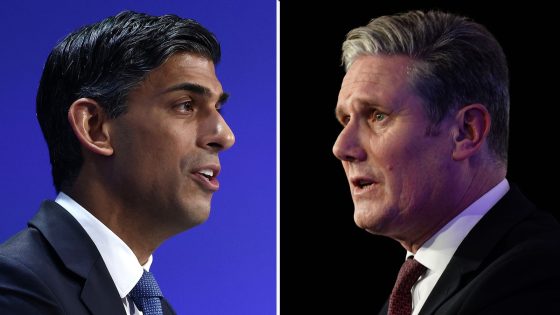This year, for the first time, male athletes are eligible to compete in Olympic-level artistic swimming.
Yet, in an Olympic Games being touted as the first to achieve full gender parity, not one man made the cut for the competition in Paris. This has some critics asking questions about gender diversity in the sport and one swimmer calling it quits.
On Tuesday, four-time world gold medallist Giorgio Minisini posted on Instagram that the Italian championships would be his final competition. In a media conference that day, Minisini, who was left off the Italian Olympic team in April, said he preferred “the fear of uncertainty to the certainty of unhappiness.”
“I really wanted the Olympics, and I wanted it so much that I was willing to continue practising an activity that no longer gave me any pleasure other than knowing that perhaps, at the end of the tunnel, there would be five rings to give meaning to everything,” the website Inside Synchro reported Minisini as saying.
According to Inside Synchro, Minisini said that swimming used to make him feel alive, but along the way it became a mission “when I saw a good part of the world around me pitted against us who were practising a sport that they thought wasn’t for us.”

Men have competed in artistic swimming, also called synchronized swimming or synchro, at the lower levels for years. The sport made its Olympic debut in 1984 and, while it had been open only to women until now, men have been permitted to compete in it at the World Aquatics Championships since 2015.
World Aquatics announced in 2022 that men would be allowed to compete in artistic swimming at the July 26-Aug. 11 Games in Paris, with each country permitted two male swimmers in the eight-athlete team event.
Minisini and Bill May of the United States were the two most likely Olympic pioneers aiming to be picked for Paris as the first men to compete in artistic swimming. However, the 96 athletes picked by 18 countries for the Olympics are all women.
“This should have been a landmark moment for the sport,” World Aquatics said in a statement in June.
“All of us in the artistic swimming community need to work even harder to progress opportunities for male athletes in the sport.”
World Aquatics artistic swimming World Cup women’s duet free took place Sunday and the Canadian team of Jacqueline Simoneau and Audrey Lamothe claimed silver medals for Canada.
Women’s sports held to higher standard, prof says
Michele Donnelly, an assistant professor in sport management at Brock University in St. Catharines, Ont., says she suspects the conversation would be different if the roles were reversed, and no female athletes made the cut into a traditionally male sport.
“I feel like we’d be hearing, ‘Well, there’s a standard, and if you don’t meet that standard, you can’t lower them in order to have more gender inclusion in the sport,'” Donnelly told CBC News.
The current conversation around gender inclusivity in artistic swimming is just the latest example of holding women’s sports to a higher standard, Donnelly said.
She points to Olympic boxing as an example. When women were first allowed to compete — in their own category — in the 2012 London Games, there were just three weight classes for women compared to 10 for men. And just 36 competitors compared to the men’s 250.

And there “wasn’t a lot of concern about that,” Donnelly said, noting the media focus was more on 2012 being the first Olympic Games with a female athlete from every competing country.
This year, the Games will be the first to achieve numerical gender parity, according to the IOC, with the same number of female and male athletes participating. But there are still slightly more medal events for men, 157, compared to 152 for women, plus 20 mixed-gender events.
“Women’s sports must be gender inclusive. Why? There are still fewer opportunities for women to win medals at Paris,” Donnelly said.
“Why the higher expectations for being more inclusive for women’s sports when there are longstanding men’s sports that haven’t moved in that direction at all?”
While there may be some general disappointment that no men made the teams this year, it’s simply too soon to have a broad enough base of male athletes who can compete at the elite level, said Kerri Morgan, the chief sport officer for Canada Artistic Swimming.

Most of the athletes on Canada’s all-woman national team have been swimming for 10 to 15 years, she added, and 10 to 15 years ago “we didn’t have any boys in artistic swimming.”
“Men are very capable. There’s no reason they couldn’t be on an Olympic team,” Morgan told CBC News. “But it is a sport that takes a lot of time in order to become proficient enough to make a national team.”
Strongest possible squad
May of the U.S. had been one of the artistic swimming hopefuls. The 45-year-old has long been one of the leading voices on male inclusion, telling reporters in April, “Every day I think about the Olympics and I think about being there with our coaches and our teammates. It’s such a dream.”
But he, too, didn’t make the cut onto the eight-person Olympic team. Adam Andrasko, chief executive of USA Artistic Swimming, told the New York Times in June that even though May is “an inspiration,” they had to send the strongest possible squad to Paris.

“Unfortunately, the rules of artistic swimming only allow for eight athletes to swim all three routines,” Andrasko said in a statement. “We will continue to celebrate Bill and support male participation across the sport while also celebrating the story of these eight incredible women.”
Canada’s squad is also all women, and in good standing (despite being considered underdogs) after winning three medals at the World Cup in June.
Canada has won eight Olympic medals in artistic swimming, including in 1984, when the sport debuted in Los Angeles, and Carolyn Waldo won silver in the solo event. Canada last won an Olympic medal in 2000, earning bronze in the team event in Sydney.
This year, there are two events on the program: duet and team. Each event includes technical and free routines, and the team event also includes an acrobatic routine. Each routine is scored by judges.

‘Different is healthy’
The challenges of artistic swimming as a judged sport could play into the decision not to include men on the teams, even if technically, it’s allowed, Donnelly said. It’s a sport in which esthetics play no small part.
For instance, the athletes typically compete in matching bathing suits, slick back their hair into identical hairstyles and hold their breath through mouths lined with the same coloured lipstick.
“We don’t see much diversity even among the women who are competing, so it’s probably not a surprise to not have immediate uptake to putting men on the team,” Donnelly said.

“That’s a lot to ask of a team going to a once-every-four-years competition.”
But Morgan, with Canada Artistic Swimming, says that while having men on a team changes the choreography, the result is no less esthetically pleasing.
“It’s just different. And different is OK. Different is healthy and that change could be great for the sport.”
Canada’s artistic swimming team finished in seventh place in the mixed team free final, at the 2024 World Aquatics Championships in Doha, to earn a spot in the 2024 Olympic Games in Paris.
Source Agencies






